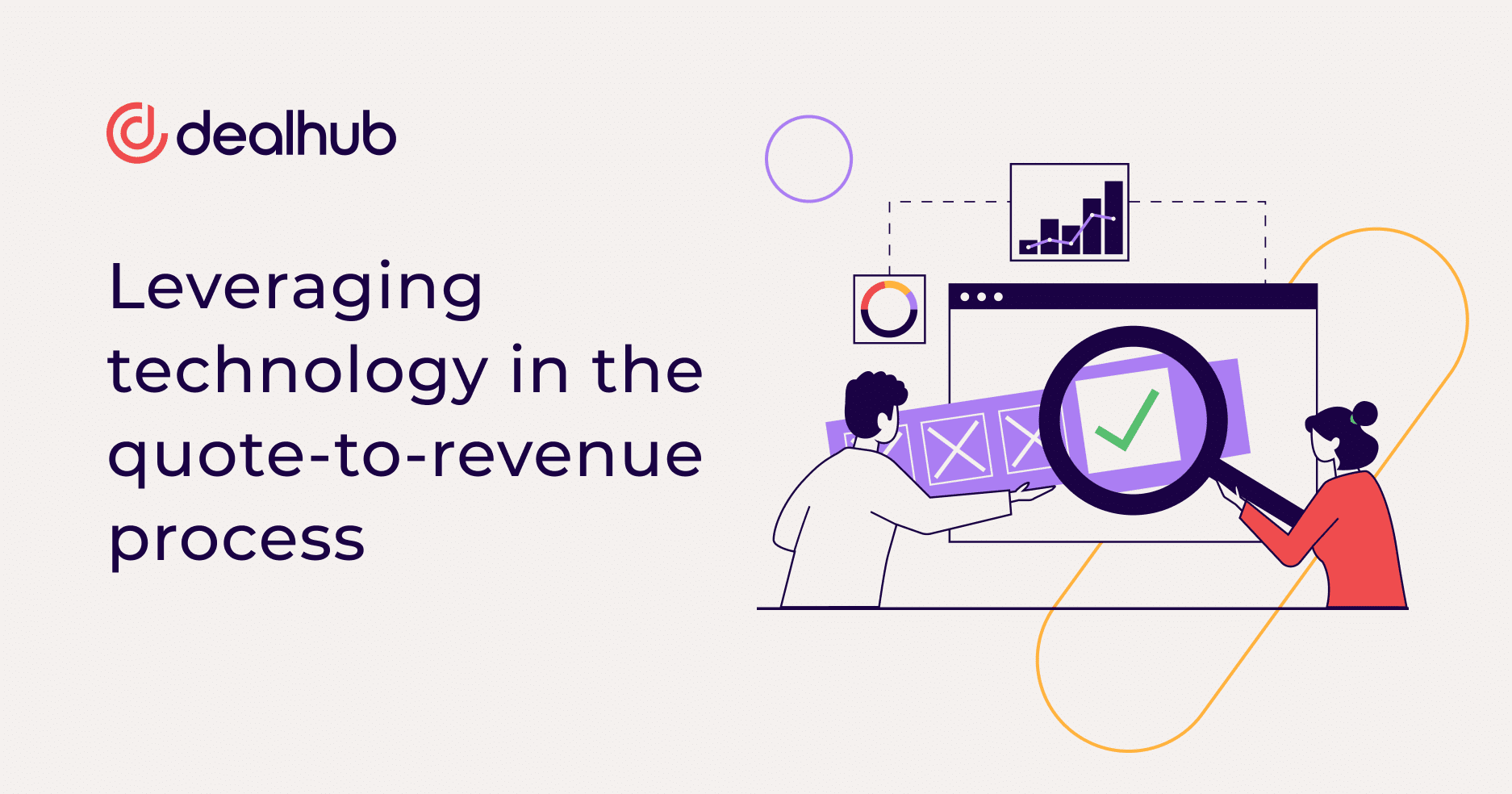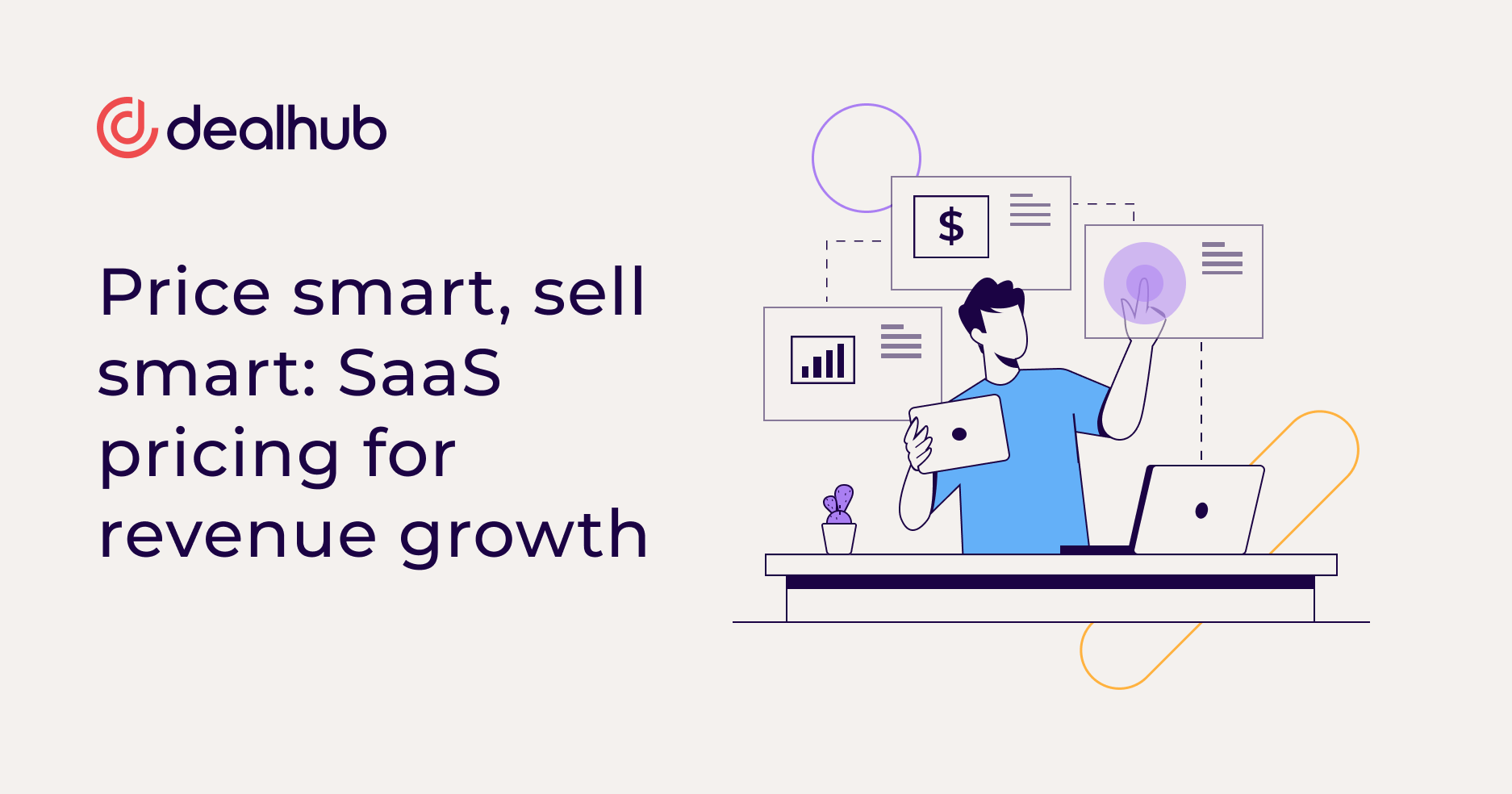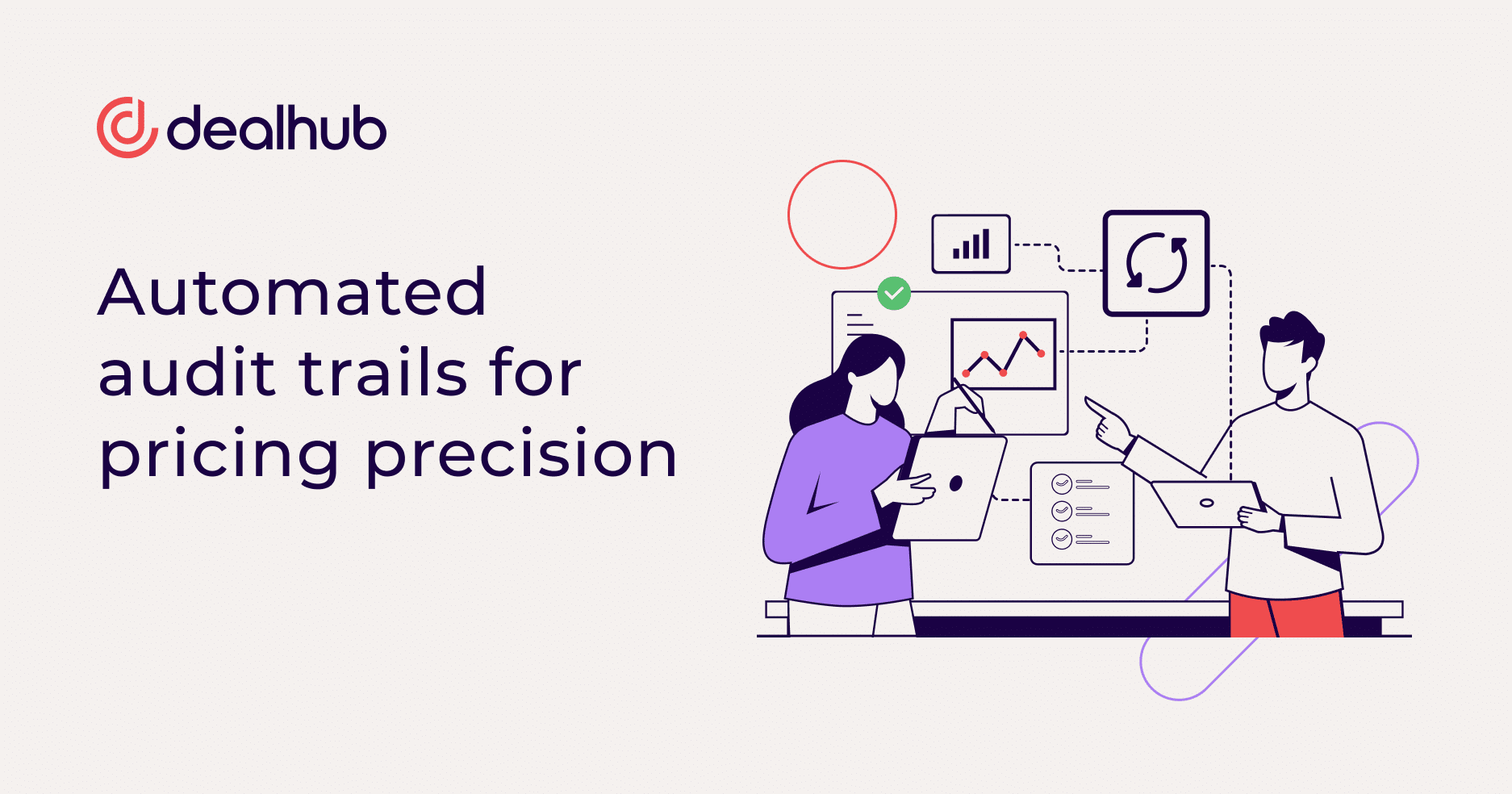Efficiency, accuracy, and compliance align when an organization’s Q2R is constructed strategically. Q2R is the most effective when organizations adopt technology that forms the infrastructure that binds processes together seamlessly.
Are you ready to navigate the complex world of Q2R? Today, we’ll explore how technology, including CPQ software, CRM systems, and revenue management tools, can work magic to streamline and automate critical Q2R processes.
Understanding the quote-to-revenue process
Before we dive into the world of tech-powered solutions, let’s first grasp the stages of the Q2R process and the challenges that businesses face without the aid of these tools.
Stages of the Q2R Process:
Stage 1: Quoting – The inception of a revenue-generating journey often begins with a quote. Without proper tools, businesses can struggle with inconsistent pricing, quoting errors, and a lack of insights into customer preferences.
Stage 2: Contracting – After the initial agreement, both parties must agree to the details of a written contract. Without automation, managing contracts can be a labyrinth of version control issues, delayed approvals, and missed renewal opportunities.
Stage 3: Billing – Billing should be straightforward, right? Not always! Without automation, invoicing can become a tangled mess of late payments and disputes. Inconsistent billing, therefore, has the potential to become a considerable resource drain.
Stage 4: Revenue Recognition – Recognizing revenue is where the rubber meets the road. Manual recognition can lead to inaccuracies, non-compliance, and financial headaches.
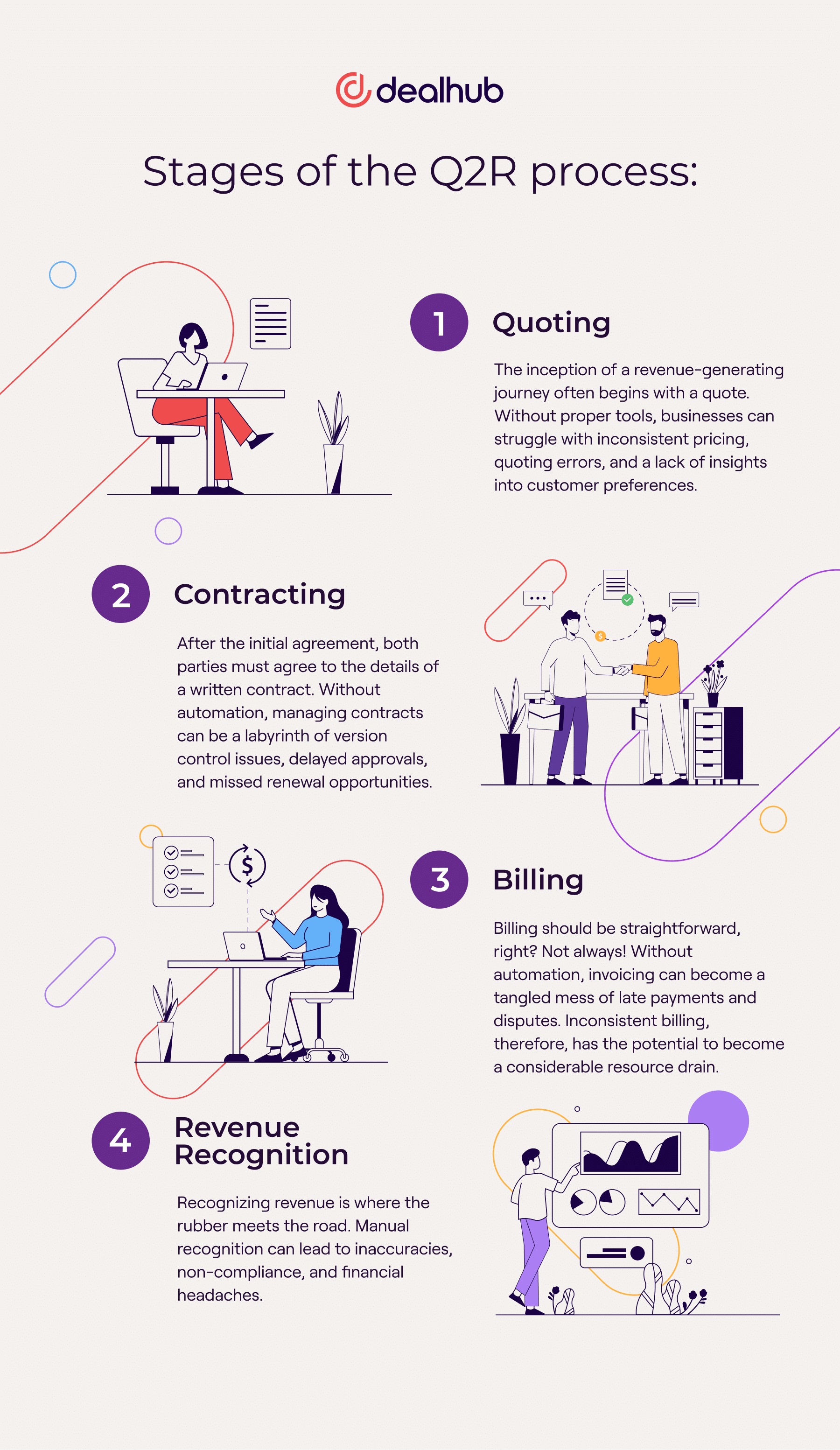
The role of technology in Q2R
Since Q2R can be quite a complex time and resource-consuming endeavor, technology can be a game-changer. Sales leaders can leverage technology in Q2R via:
Efficient quoting with CPQ software
Configure, Price, Quote (CPQ) is a technological powerhouse that takes the guesswork out of pricing, ensuring consistency and accuracy. It allows businesses to quickly generate quotes tailored to each customer’s needs, slashing turnaround times and increasing the chances of closing deals. With CPQ, you’ll bid farewell to the days of manual calculations and pricing discrepancies.
Leveraging CRM systems
Customer Relationship Management (CRM) systems are your best allies in managing customer information. They provide a centralized hub for customer data, interactions, and preferences. When integrated with CPQ, CRM systems create a seamless flow of information, ensuring that your sales team has the latest customer insights at their fingertips. This synergy between CRM and CPQ allows for personalized quotes, making them more compelling to clients and increasing conversion rates.
Managing subscriptions and renewals
Across the SaaS landscape, subscriptions are king. However, managing subscription data and renewals can be complex without automation. Integrating subscription management tools into your Q2R process allows you to track subscription lifecycles, send timely renewal reminders, and minimize churn. These tools also allow you to experiment with pricing models, adapt to changing market conditions, and drive growth.
Real-time billing solutions
Billing isn’t just about sending invoices; it’s about ensuring they are accurate and timely. Real-time efficiency in billing solutions starts with automating processes to eliminate errors and delays. With automated billing, you can provide customers with flexible payment options, set up recurring billing, and effortlessly handle international transactions. It’s not just about saving time; it’s about enhancing the overall customer experience. This keeps clients happy, increasing the likelihood of repeat business.
Revenue management tools
Revenue management tools play a crucial role in optimizing revenue recognition. These tools track revenue streams in real-time, ensuring compliance with revenue recognition standards. They help you recognize revenue accurately, forecast future earnings, and make informed decisions to drive growth.
Benefits of automating Q2R with technology:
Now that we’ve seen how technology transforms each stage of the Q2R process, let’s explore its tangible benefits.
Efficiency and time savings
One word summarizes the impact of technology here: efficiency. Automation reduces manual tasks, slashes processing times, and eliminates bottlenecks. This newfound efficiency allows your team to focus on higher-value activities, for example, nurturing customer relationships and exploring growth opportunities.
Reduced errors and improved accuracy
Human errors are an inevitable part of manual processes. Technology minimizes these errors, ensuring that quotes, contracts, and invoices are error-free. This boosts your reputation and saves you from costly disputes and compliance headaches.
Enhanced customer experience
Satisfied customers are loyal customers. Technology-driven Q2R processes enable you to provide customers with personalized experiences. Customers will notice and appreciate how tailored quotes and hassle-free billing streamline the buying experience. The best part: happy customers are more likely to renew subscriptions and refer others, contributing to brand revenue growth and increased brand visibility.
Scalability and growth opportunities
As your business grows, so does the complexity of your Q2R process. Luckily, technology scales with you, adapting to your evolving needs. This scalability positions you for expansion into new markets, product offerings, and revenue streams. With technology, companies can manage the present while setting the stage for future growth.
How SaaS companies leverage technology to optimize Q2R
SaaS companies are taking advantage of technology to maximize their Q2R process – and doing so in unique and practical ways. Here are some real-world examples from DealHub’s case studies:
Example 1: Sendoso’s successful implementation of CPQ
Sendoso needed a CPQ solution due to several challenges arising from their company’s rapid growth. For example, discounts exceeding the agreed-upon thresholds impacted the company’s premium brand image and profitability. Sendoso also struggled with an inefficient manual process for discount approvals that diverted managers’ attention away from core responsibilities and account executives were spending too much time and inadvertently making errors when creating sales proposals manually. As Sendoso targeted larger customers, they required more sophisticated and professional-looking sales proposals.
Once they implemented DealHub’s CPQ, the company was able to increase its deal size significantly. Sendoso can now automate pricing mechanisms, ensuring profit margins and controlling discounting, resulting in a 15% growth in average deal size. Agreements take less than 10 minutes (3X faster). Changes to quotes and contracts now automatically sync with Sendoso’s Salesforce CRM, maintaining up-to-date records. The automated process also removes the need for manual proposal creation, reducing errors by 95%.
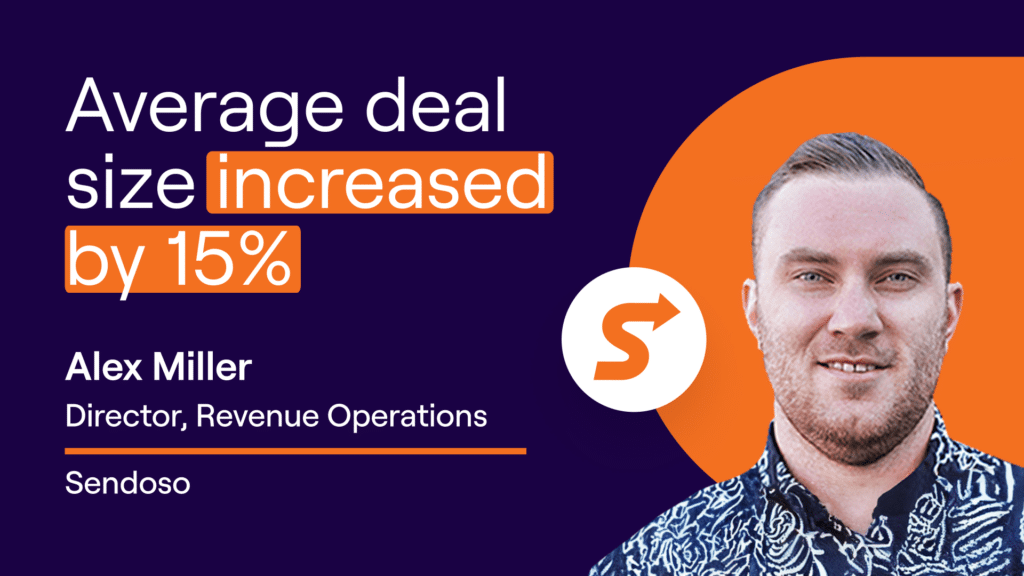
Example 2: How CPQ and billing integration boosts Contentsquare’s Q2R process
Contentsquare needed CPQ and billing integration for several key reasons, the first being its sudden rapid growth that made managing complex pricing structures increasingly difficult. Relying on Excel for quote creation was causing delays in the sales process, requiring manual intervention and leading to inefficiencies. The company also depended on manual, time-consuming processes that hindered progress tracking, approvals, and collaboration. Overall, there was a lack of shared visibility, and manual handoffs impeded seamless collaboration.
The results of integrating CPQ and Billing into Contentsquare’s processes were significant right from the outset. The customizable implementation provided a flexible solution to support Contentsquare’s complex pricing structures while accommodating its growth. The integration of DealHub with Salesforce has streamlined the entire Q2R process to speed up sales, increase efficiencies, and reduce errors. Additionally, automated approval requests accelerated deal velocity, and centralization improves collaboration between RevOps and Finance teams. This facilitates seamless communication and reduces errors and delays in the Q2R process.

Example 3: Subscription management tools transform Lumina Solar
Lumina Solar faced several challenges before implementing subscription management tools, including a lack of visibility where sales representatives manually chose products and pricing from a catalog, leading to pricing errors and deal anomalies. Accurately forecasting inventory and materials was also too complex. It required detailed insights into which deals were likely to close and when. Lastly, multiple tools and manual data entry were used, leading to delays, errors, and unimpressive, unprofessional-looking proposals.
After implementing DealHub, Lumina Solar achieved significant and measurable improvements. Using DealHub’s guided selling methodology helped create accurate quotes during the first iteration, reducing the need for finance teams to verify deals and reconcile commissions 94% faster. DealHub also integrated with its Salesforce CRM to provide real-time data on quotes, products sold, and customer locations for more accurate forecasting. Ultimately, the sales proposal process sped up by 80%, enhancing professionalism and efficiency.

Embracing Q2R automation
When it comes to efficient revenue management, embracing Q2R automation isn’t just a choice; it’s a necessity. Here are the key takeaways:
- Efficiency is king. Automation streamlines the Q2R process, saving time, reducing costs, and boosting productivity.
- Accuracy matters. Implementing technology eliminates errors and ensures compliance with automated solutions, safeguarding your reputation and bottom line.
- Customer satisfaction is baked in. Happy customers lead to increased revenue. Personalized experiences driven by technology are the path to customer delight.
- Prepare for growth. Technology scales with your business, opening doors to new opportunities and markets when you are ready to expand.
The Quote-to-Revenue process is the lifeblood of SaaS businesses, and technology is the lifeline that keeps everything running efficiently. From CPQ software to CRM systems and revenue management tools, the arsenal of tech solutions is vast. By embracing automation and investing in these tools, you’re not just streamlining the quote-to-revenue process – you are future-proofing your business for a competitive edge in revenue management. Embrace the power of technology and watch your revenue soar in this ever-evolving business landscape!


